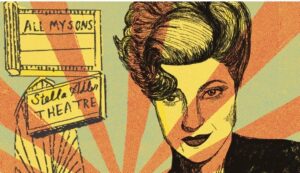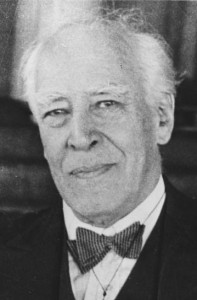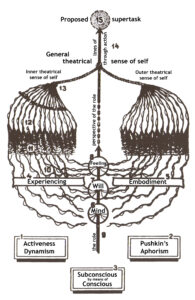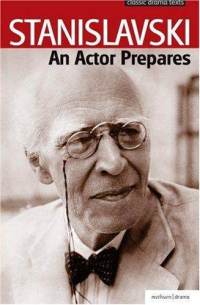
Constantin Stanislavski taught his actors to image their part, and the circumstances of the play. In his method the actor has imaged his part and how it will play prior to taking the stage. This imaging concept also holds true for for trials. Edited for trials Stanislavski teaches:
First, we must have an unbroken series of supposed circumstances in which our trial will develop. Second, we must have a solid line of inner visions bound up with the supposed circumstances, so we have a picture in our mind of the trial playing out. During every moment of the development of the trial, we must be aware of either the external circumstances which surround the trial, or of the inner chain of circumstances which we have imagined to illustrate the case.
Through imaging we arrive at an unbroken series of pictures of the trial- our personal movie. As long as we trust ourself the trial will unfold similar to our inner vision. As the trial unfolds our inner vision creates a corresponding mood which arouses emotion in the jury.
Constantin Stanislavski, An Actor Prepares, (Translated by Elizabeth Reynolds Hapgood) (1936).
What this means is before the trial begins, we image every phase of the trial. This includes pre-trial motions, jury selection, opening statement, direct and cross examination, introduction of documentary evidence and closing argument. By doing this we internalize each phase of the trial. We feel each phase of the trial because we create the inner vision (personal movie) of the trial.
We know from experience the trial may take turns different from our inner vision. Stanislavski recognizes this when he teaches we must always be aware of the external circumstances of the trial. Here we must trust our case preparation, believe in ourself, accept the turns the trial takes, roll with the turns, and never quit on our inner vision.
Post Footer automatically generated by Add Post Footer Plugin for wordpress.
 According to Thomas Merton “[t]rue humility excludes self-consciousness… .” Thomas Merton, Seeds of Contemplation at 112 (New Directions 1949).
According to Thomas Merton “[t]rue humility excludes self-consciousness… .” Thomas Merton, Seeds of Contemplation at 112 (New Directions 1949).


 Living the truth occurs when the lawyer is so connected to the truth and their client they have entered into the reality of their client. The lawyer feels what the client feels and thinks like the client thinks. This is short of losing the self. Rather the lawyer’s consciousness and the client’s consciousness meet. (Butler, The Method at xiv). To Stanislavski living the truth is the highest level, the artistic mountaintop that all lawyers should strive to reach.
Living the truth occurs when the lawyer is so connected to the truth and their client they have entered into the reality of their client. The lawyer feels what the client feels and thinks like the client thinks. This is short of losing the self. Rather the lawyer’s consciousness and the client’s consciousness meet. (Butler, The Method at xiv). To Stanislavski living the truth is the highest level, the artistic mountaintop that all lawyers should strive to reach. Method lawyering in the words of Constantine Sanislavski is “Living the Truth.” Living the truth as a trial requires me to connect with my client to discover my client’s story. When done methodically I am able to convey from my heart what my client has gone through and how their future holds. My first step in living the truth is to internalize the feelings my client experienced and continues to experience to the point I feel and think like my client.
Method lawyering in the words of Constantine Sanislavski is “Living the Truth.” Living the truth as a trial requires me to connect with my client to discover my client’s story. When done methodically I am able to convey from my heart what my client has gone through and how their future holds. My first step in living the truth is to internalize the feelings my client experienced and continues to experience to the point I feel and think like my client. I recently read The Method by Isaac Butler. The Method was developed by Constantine Stanislavski the great Russian acting philosopher. The book takes Stanislavski from Russia in the early 20th century into the United States where his Method Acting catches fire and Butler continues to discuss American acting into the late 20th century.
I recently read The Method by Isaac Butler. The Method was developed by Constantine Stanislavski the great Russian acting philosopher. The book takes Stanislavski from Russia in the early 20th century into the United States where his Method Acting catches fire and Butler continues to discuss American acting into the late 20th century.

 Every trial lawyer knows a trial takes a life of its own with unexpected twits and turns. Preparation is essential, yet to succeed the lawyer must keep readjusting so the jury accepts and feels the changing circumstances and emotions. This ability which actors and trial lawyers must have is called “Adaptation.” Constantin Stanislavski,
Every trial lawyer knows a trial takes a life of its own with unexpected twits and turns. Preparation is essential, yet to succeed the lawyer must keep readjusting so the jury accepts and feels the changing circumstances and emotions. This ability which actors and trial lawyers must have is called “Adaptation.” Constantin Stanislavski, 
